
Latin Name
Bothrochilus boa.
Common Name
Bismarck Ringed Python.
Adult Size
120cm - 180cm rarely exceeding 200cm.
Distribution
Species range,
The Bismarck Ringed python (Bothrochilus boa) is found throughout the Bismarck archipelago off the eastern coast of Papua. They are distributed from Umboi island in the west of the archipelago, throughout the large island of New Britain and the New Ireland chain of islands including New Hanover and Latangai island.
They have also been recorded on the Nissan Atoll at the northern most tip of the Solomon Island chain. (O'shea 2011)
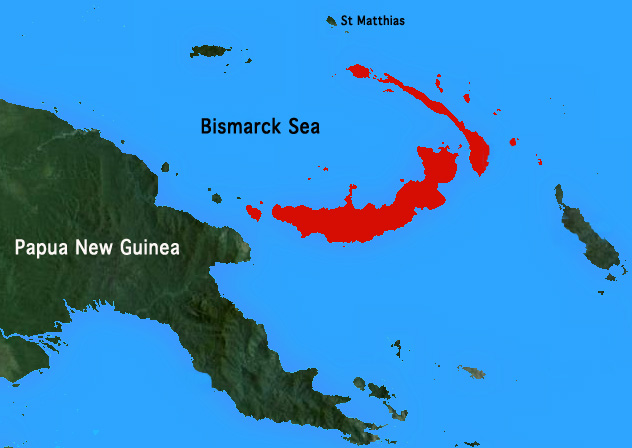
Habitat
Bothrochilus boa is a lowland species reportedly found up to an elevation of 300m.
Found in primary rainforests and secondary forest often near river systems.
Also found in more open and cultivated areas of land close to closed canopy forest including coconut, cacao and copra plantations and along logging trails. (Barker, Barker, Auliya 2018) (O'shea 2011)
General Description
Bothrochilus boa natural history,
Bismarck ringed python natural history,
Ringed python biology,
Ringed python natural history,
The ringed python, (Bothrochilus boa) is a crepuscular / nocturnal, semi fossorial python and must surely rank as one of the most beautiful of all the python species, whilst embellished with their juvenile colours.
Undergoing an ontogenetic colour change as they mature, some of their vibrant colour fades, but for the first nine to twelve months of their lives they are adorned with the most magnificent orange and black colouration.
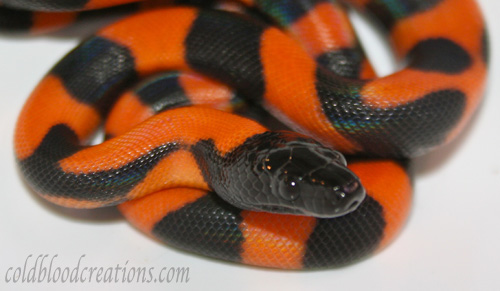
The orange and black colours form bands or rings along the snakes body and this is where the snake derives it's common name. The bands however can vary greatly from individual to individual and may present themselves in the form of stripes, blotches or rings with varying amounts of orange.
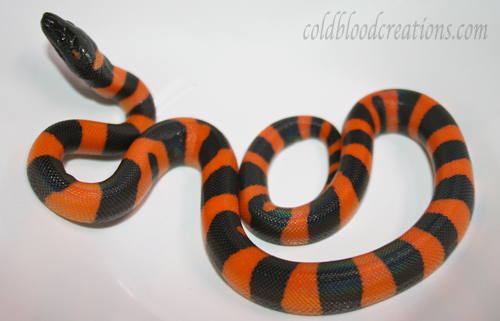
It has been noted that the variation in pattern may be down to geographic location, with solid coloured and possibly striped specimens originating in the west of the species range (Umboi and New Britain) and ringed individuals originating from the east of the species range (the New Ireland chain). (O'shea 1998)
This could explain why many captive bred clutches contain a wide variation in patterning. Founding animals of captive lines may have come from differing geographic localities.
Irrespective of body pattern, all individuals have a glossy black head colour that extends to the back of the jaw and many specimens have small lighter markings just behind the eyes.
The eyes are very dark and match the black head colour and sheen so well that it can be hard to make the eyes out on very young animals.
In very young specimens the orange is very deep in colour as can be seen in the images above.
Somewhere between 6 months and a year of age the colour starts to change and the orange lightens in tone and fades a little, with the scales on the lower lateral surface taking on an almost yellow colour in some specimens.
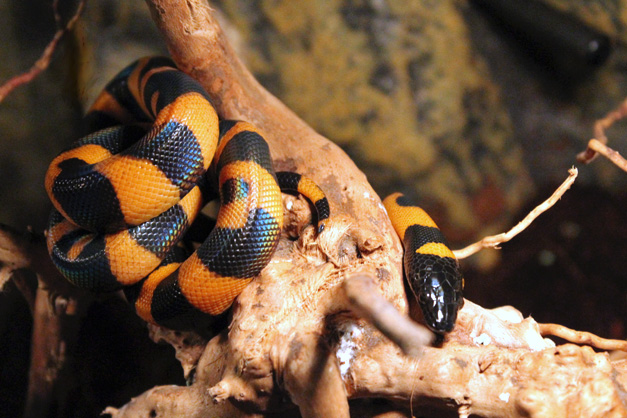
Around a month or so after these lighter colours appear, they start to change again as the orange scales start to develop darker areas within them. This can be seen in the image below.
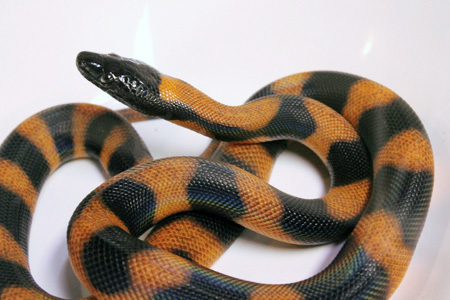
The darkening of the orange continues and covers larger areas within each scale until somewhere between 12 and 24 months of age they have taken on their adult colouration of iridescent
orange-brown and black as can be seen in the image below.
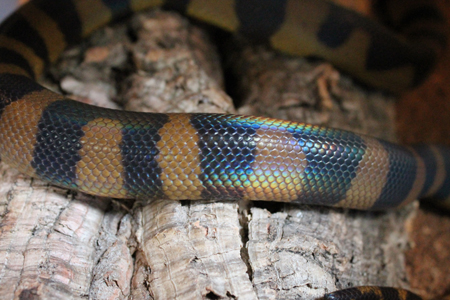
These orange-brown colours can still vary tremendously in adults with regards to how light the colours are. Some specimens can have very dark brown colouration with very little contrast between the brown and black banding and some of the nicest looking specimens can have a high contrast between the banding, retaining more orange and yellow colour when fully mature.
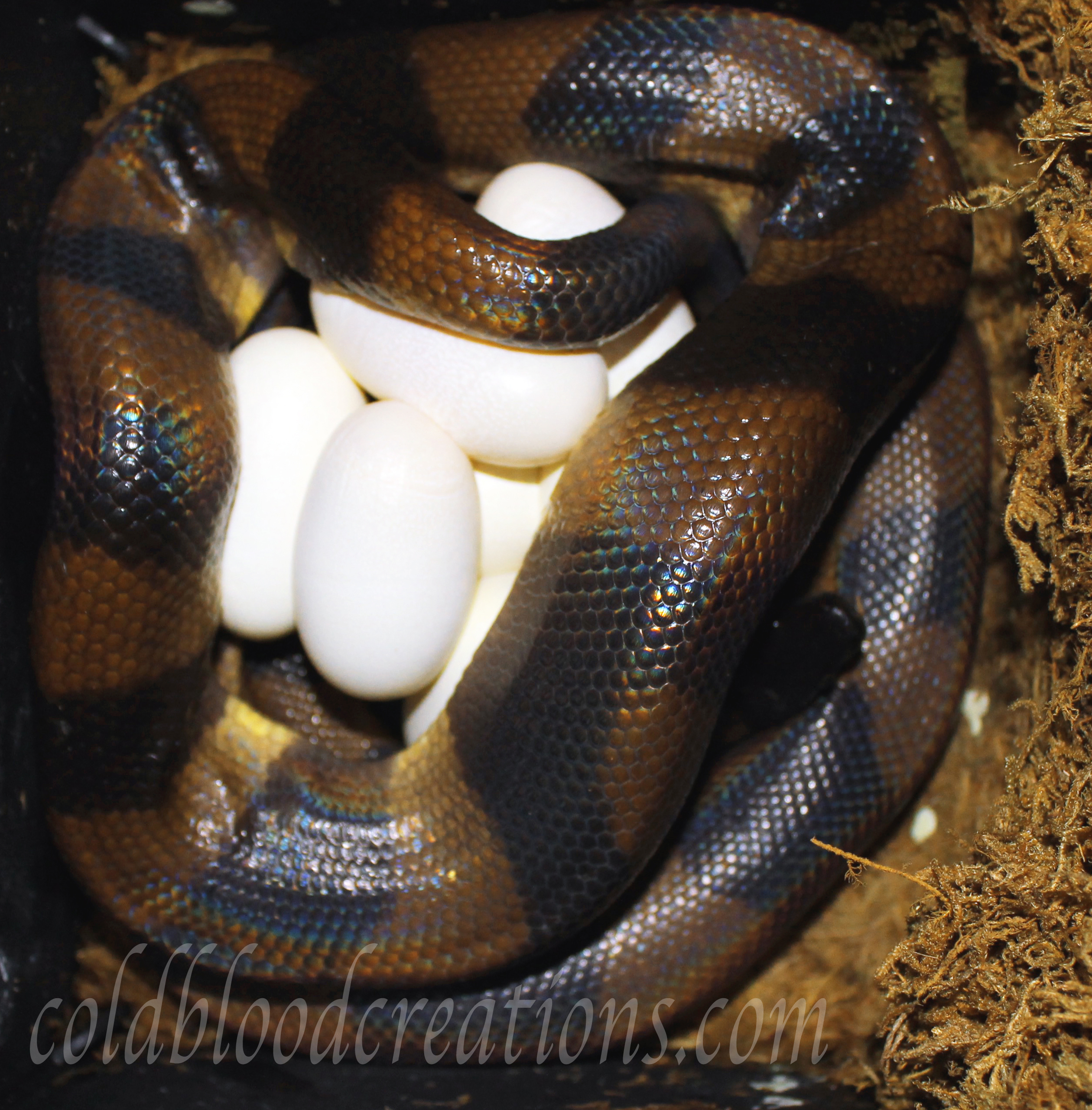
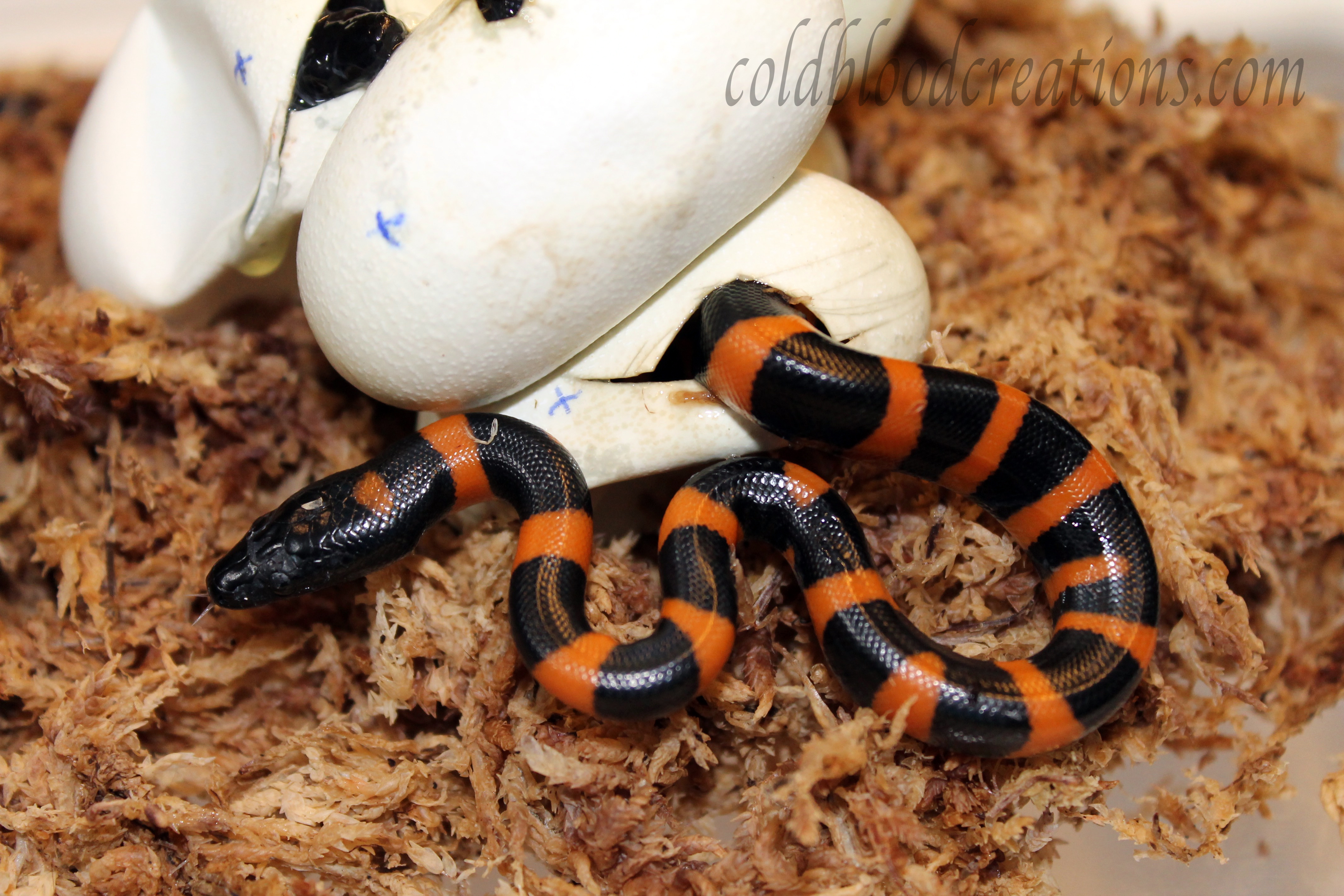
From laying to hatching 66 days.
Quite a long incubation period for such a small python species.
The head of Bothrochilus boa is small, relatively indistinct from the neck (unlike the white lipped pythons) and has a very narrow pointed snout. There are four heat sensitive pits on the back of the lower jaw and no heat pits on the upper jaw.
The differing head shape possibly aids this semi fossorial species to push into substrate and burrow.
Captive Care
Bothrochilus boa care sheet, Bismarck ringed python care sheet, ringed python care sheet,
Caging and substrates;Because of the similarities between Ringed pythons and White lipped pythons I have been keeping Bothrochilus boa under similar conditions to how I keep Leiopython albertisii (Northern white lipped python).
I acquired a group of 2.2 established German captive berd hatchlings that were feeding well but were still very young and still very small, weighing between 12g and 18g each and varying between two and four months of age. Due to their small size I felt it best to keep them in a sterile set up for the first months in my care.
For the first few months I kept them individually in a rack system with back heat in tubs that measured 34cm x 25cm x 16cm. I kept them on a paper towel substrate that I kept fairly damp by twice daily misting's. The tubs were set up with small glass water bowls and two plastic hides, one placed towards the back (warm) side of the tub and the other at the front (cool) side of the tub. All the tubs also had a plastic mesh for climbing.
Because Bismarck ringed pythons are a semi fossorial species I also added ripped up pieces of dry paper towel for the pythons to hide under. I felt that having hiding places that could be in contact with most of the pythons body at the same time would be beneficial to the snakes.
At this age the young ringed pythons were very messy. Having a fast metabolism and frequent feedings of pinky mice meant that the paper towels were soiled on an almost daily basis. Because I was keeping the paper (substrate) constantly damp it meant daily cleaning and changing of the towels to avoid a build up of bacteria and to prevent any possible skin infections.
Once the snakes were around 8 months or so in age and had all increased in weight to over 30g I kept the same basic set up but changed the substrate over to plantation soil (coco fibre). By this time they had started eating small fuzzy mice and were a little less messy. I kept the soil substrate around 5cm deep to allow the snakes to burrow, which they did a large part of the day. They also showed themselves during the day a lot more than many other terrestrial python species and were very active and somewhat colubrid like in behaviour.
The substrate was kept slightly damp to keep the overall humidity high. I stirred the substrate once every 5 days or so to avoid mould growth and also to loosen it up after it became compacted by these active pythons. I also removed any faecal matter or dry urates as soon as they were noticed along with a large scoop of the substrate.
At around 12 months of age I moved the pythons into larger tubs that measured
70cm x 39cm x 40cm. These are set up using the same plantation soil substrate but slightly deeper at around 10cm and are set up in a more naturalistic way using cork bark slabs for hides and branches for climbing.
The tubs are set up with large heat mats providing back heat to most of the rear of the tub and narrow heat mats providing bottom heat at the rear of the tubs also. They are lit using led lights that are on for 12 hours a day to provide a natural photoperiod.
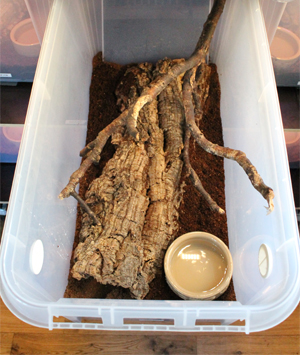
After the snakes were 2 years in age I moved them into individual 100cm X 60cm X 60cm terrariums that were set up naturally with bio-active soil mix substrate (see terrarium pages for details) and backgrounds providing plenty of hides both warm and cool. In these enclosures they would burrow a lot and the soil mix supported any tunnels that they created.
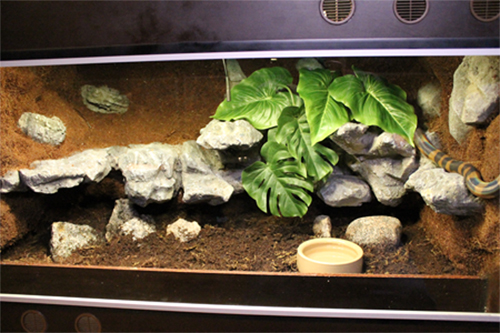
Humidity. Bothrochilus species have very thin delicate skin and can dehydrate very quickly if humidity drops too low and fresh water is not provided at all times.
The thin skin can also cause problems when shedding if humidity is not kept fairly high and the python kept well hydrated.
I have based humidly requirements for my ringed pythons on how I maintain my white lipped pythons. I provide high (60% - 80%RH) at all times and also keep the substrate slightly damp at all times. I have not had many bad sheds in the 2.2 group to date and have not as yet seen any skin issues in this species from these conditions.
Temperature.Again based on my white lipped python maintenance, when young I kept a constant 30C - 26C temp gradient in the tubs. Once they were around 15 months old I started providing a night drop to provide a night time high of around 26C.
Once placed in adult terraria I maintain a 29C - 23C temp gradient with a night time drop to 26C - 23C during the winter. In the summer temps would fluctuate as the room the snakes are kept in warms more during the day and cools less at night. Temps in the summer are 29C - 27C daytime and 27C - 25C night time.
Lighting. Bismarck ringed pythons although primarily nocturnal, do show themselves during the day and so will benefit from some sort of light reaching their enclosure. This will provide a natural light cycle and also allow the snake to be viewed. It can be as simple as making sure the area in the house where they are kept receives some natural light from a window each day or by using artificial lights inside or facing the enclosure.
My adult terraria are all lit by Arcadia jungle dawn LED lighting. I used no artificial light on the hatchling tubs although they did still benefit from light in the snake room.
Food.Young Bismarck ringed pythons can be fed small defrosted pinky mice. These pythons have a fast metabolism and so can be fed quite frequently. I fed the young animals every four to six days during the first six months and then reduced the frequency to every seven days or so during the following 12 months.
I fed fuzzy mice as soon as the pythons were big enough to take them but as the snakes grew I didn't bump prey size up too quickly, preferring to feed multiple smaller prey items because of the small head structure of these pythons.
Once the animals were over two years of age I fed them on a ten to fourteen day schedule.
I followed the above feeding schedule loosely and did have periods of not feeding for a few weeks and also varying prey size for reasons written below and on the main terrariums page of this web site.
Once feeding well Bismarck ringed pythons have a very active feeding response and are veracious feeders, seldom refusing any prey offered. If sticking more rigidly to a feeding schedule, care should be taken to keep an eye on their weight and body condition. Although ringed pythons have a high metabolism and are extremely active, they can quickly show signs of becoming obese. In my opinion, ringed pythons seem to be slower growing than Bothrochilus albertisii (white lipped pythons). Keeping an eye on the snakes scales can help avoid obesity. Scales along the body of the python should sit flush to each other and show no skin between them. If you start to see skin between the scales when the snake is not digesting a previous meal, the snake is possibly getting fat and feeding frequency and/or prey size should probably be reduced.
Water.Water should be provided at all times and should be kept fresh. Plastic, glass or metal containers can be used and the water should be replaced a couple of times a week or when soiled. Bowls should be thoroughly cleaned and disinfected every couple of weeks or again when the water has been soiled. I also make an effort to provide fresh water just prior to feeding as I have noticed that these pythons will drink quite heavily after feeding.
I have provided my group with small water bowls and although just about large enough for the animals to soak in, to date I have not witnessed any attempt to soak by any of the group.
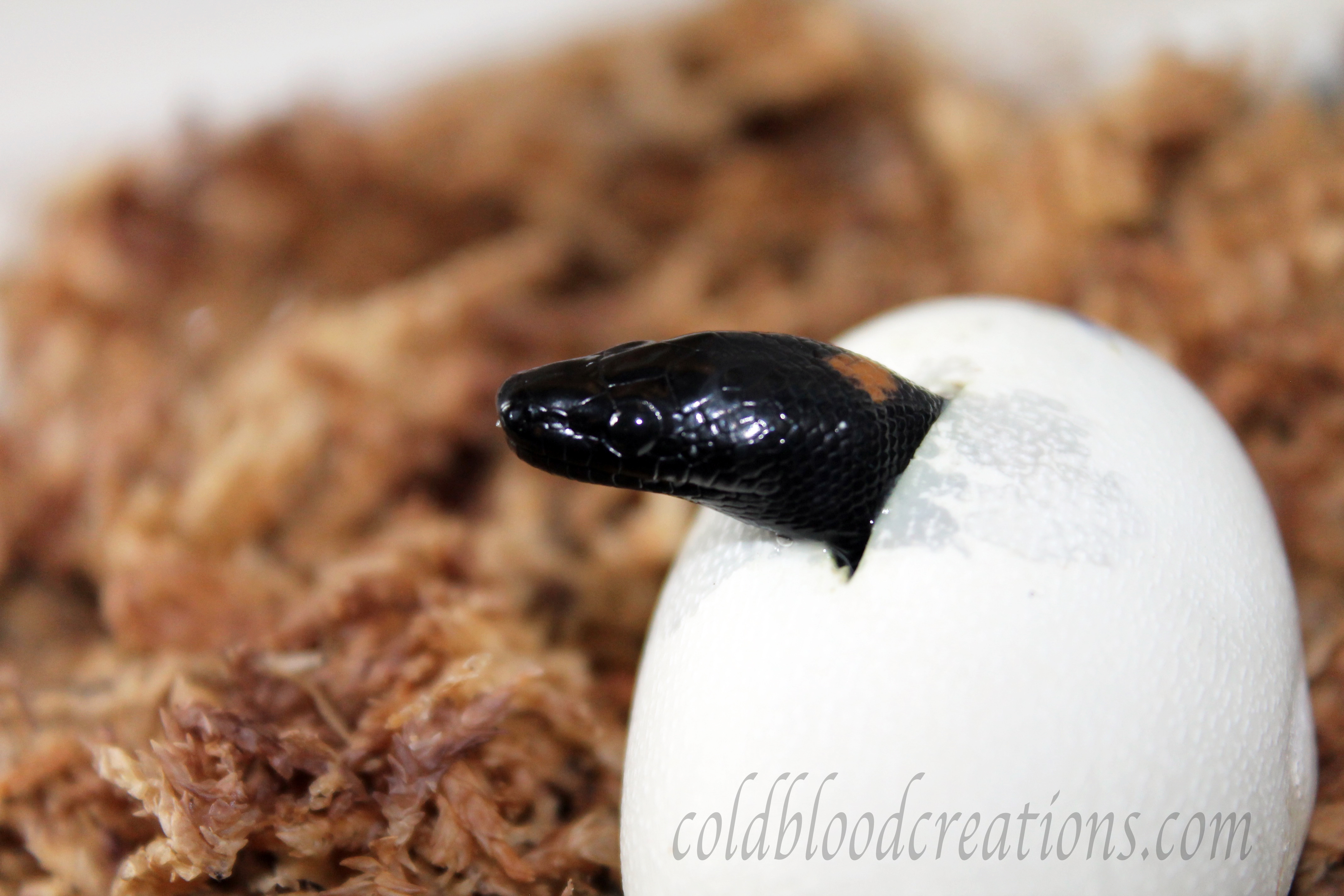
Point of interest
An interesting behaviour in these pythons is the regurgitation of (for want of a better description) furr balls. Every so often Ringed pythons will cough up what looks like a long furry wet pellet. This happens at night and I have found it to happen four to five days after the snake eats. This behaviour is also seen in White lipped pythons (Leiopython sp).
Although the group I have been raising has been on the whole very healthy, one male from the group has suffered numerous rectal prolapses. They began when the animal was around a year old. Although quite small and easy to re-insert, these prolapses happened after every few feedings for almost a year. Neither a change to a smaller prey size or a reduction in feeding frequency had any noticeable effect on the prolapses over the year period. The prolapses stopped about 12 months after they began and the animal has since been prolapse free.
An interesting note is that Bothrochilus boa is absent from the St Matthias group of islands (Mussau, Emananus and Eloaua) to the north of the Bismarck archipelago and Leiopython albertisii (White lipped python) are reported to be found on the St Matthias group of islands.
The above information is collected from various sources (click here for references) and from personal observations.
The captive care section is based on how I personally maintain this species. This is not the only way to successfully maintain this species and other keepers use different methods.
This is what works for me, with my animals and the size of collection that I work with.
